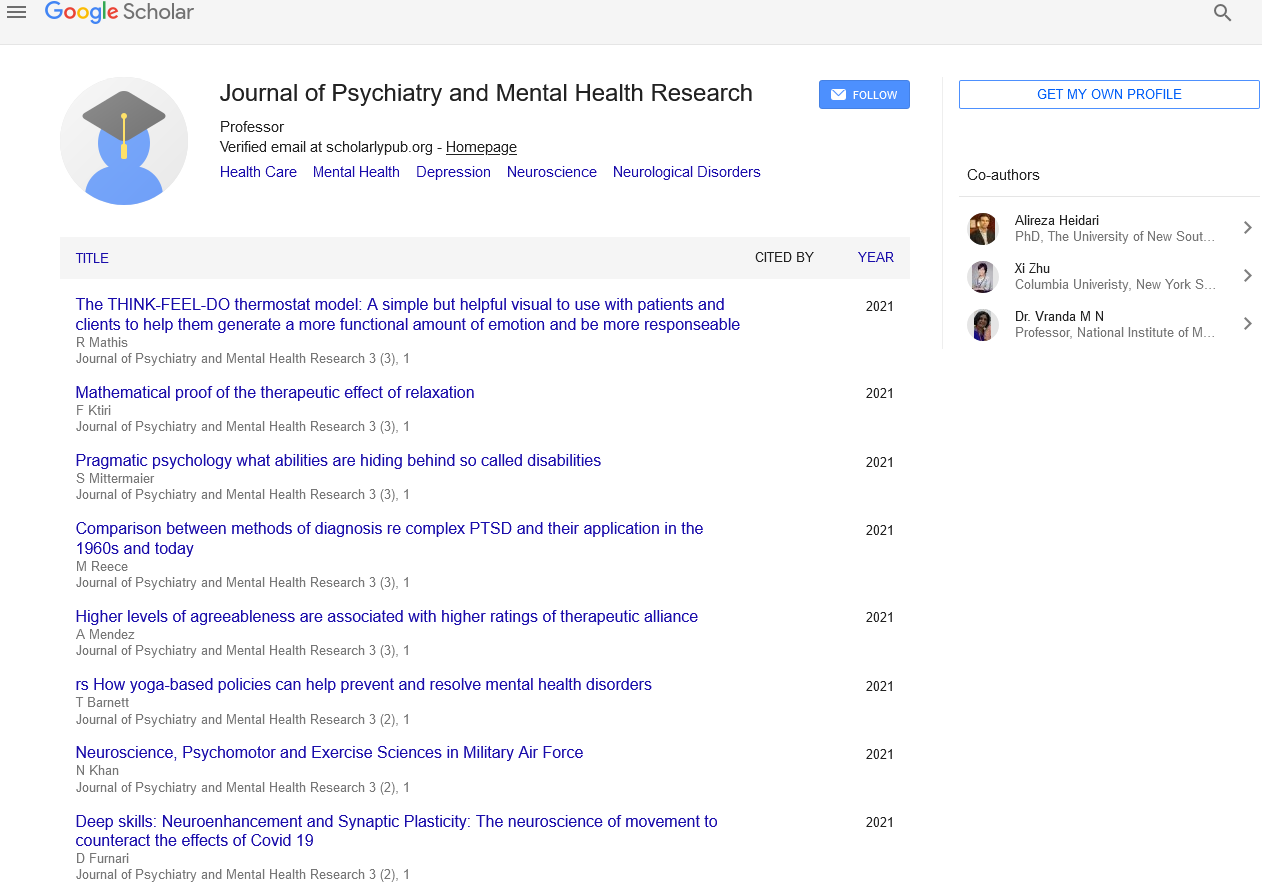diagnosis is a major component of the procedure of a doctor
Received: 03-Jan-2024 Editor assigned: 05-Jan-2024 Accepted Date: Jan 14, 2024; Reviewed: 09-Jan-2024 Revised: 12-Jan-2024 Published: 23-Jan-2024
This open-access article is distributed under the terms of the Creative Commons Attribution Non-Commercial License (CC BY-NC) (http://creativecommons.org/licenses/by-nc/4.0/), which permits reuse, distribution and reproduction of the article, provided that the original work is properly cited and the reuse is restricted to noncommercial purposes. For commercial reuse, contact reprints@pulsus.com
Description
A neurodegenerative disease is caused by the progressive loss of structure or function of neurons, in the process known as neurodegeneration. Such neuronal damage may ultimately involve cell death. Neurodegenerative diseases include amyotrophic lateral sclerosis, multiple sclerosis, Parkinson's disease, Alzheimer's disease, Huntington's disease, multiple system atrophy, and prion diseases. Because there is no known way to reverse the progressive degeneration of neurons, these diseases are considered to be incurable; however research has shown that the two major contributing factors to neurodegeneration are oxidative stress and inflammation. Biomedical research has revealed many similarities between these diseases at the subcellular level, including atypical protein assemblies (like proteinopathy) and induced cell death. These similarities suggest that therapeutic advances against one neurodegenerative disease might ameliorate other diseases as well. It is estimated that 50 million people worldwide suffer from neurodegenerative diseases, and that by the year 2050 this figure will increase to 115 million people.
Alzheimer's disease (AD) is a chronic neurodegenerative disease that results in the loss of neurons and synapses in the cerebral cortex and certain subcortical structures, resulting in gross atrophy of the temporal lobe, parietal lobe, and parts of the frontal cortex and cingulate gyrus. It is the most common neurodegenerative disease. Even with billions of dollars being used to find a treatment for Alzheimer's disease, no effective treatments have been found. However, clinical trials have developed certain compounds that could potentially change the future of Alzheimer's disease treatments. Currently, diagnoses of Alzheimer's is subpar, and better methods need to be utilized for various aspects of clinical diagnoses. Alzheimer's has a 20% misdiagnosis rate.
Parkinson's disease
Parkinson's disease (PD) is the second most common neurodegenerative disorder. It typically manifests as bradykinesia, rigidity, resting tremor and posture instability. The crude prevalence rate of PD has been reported to range from 15 per 100,000 to 12,500 per 100,000, and the incidence of PD from 15 per 100,000 to 328 per 100,000, with the disease being less common in Asian countries. PD is primarily characterized by death of dopaminergic neurons in the substantia nigra, a region of the midbrain. The cause of this selective cell death is unknown.
Notably, alpha-synuclein-ubiquitin complexes and aggregates are observed to accumulate in Lewy bodies within affected neurons. It is thought that defects in protein transport machinery and regulation, such as RAB1, may play a role in this disease mechanism. Impaired axonal transport of alpha-synuclein may also lead to its accumulation in Lewy bodies.
Experiments have revealed reduced transport rates of both wild-type and two familial Parkinson's disease-associated mutant alpha-synucleins through axons of cultured neurons. Membrane damage by alphasynuclein could be another Parkinson's disease mechanism.
Huntington's disease
Huntington's disease (HD) is a rare autosomal dominant neurodegenerative disorder caused by mutations in the huntingtin gene (HTT). HD is characterized by loss of medium spiny neurons and astrogliosis. The first brain region to be substantially affected is the striatum, followed by degeneration of the frontal and temporal cortices. The striatum's subthalamic nuclei send control signals to the globus pallidus, which initiates and modulates motion.
The weaker signals from subthalamic nuclei thus cause reduced initiation and modulation of movement, resulting in the characteristic movements of the disorder, notably chorea. Huntington's disease presents itself later in life even though the proteins that cause the disease works towards manifestation from their early stages in the humans affected by the proteins. Along with being a neurodegenerative disorder, HD has links to problems with neurodevelopment.





